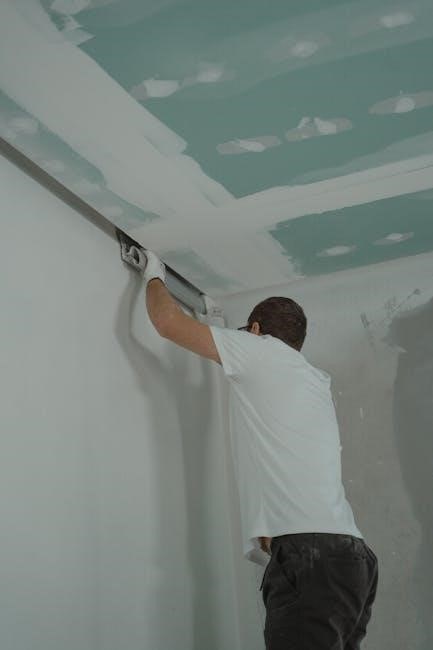The Honeywell TH5220D1029 is a non-programmable digital thermostat designed for simplicity and efficiency, part of the FocusPRO 5000 Series․ It supports up to 2 heat/2 cool systems, offering precise temperature control for gas, oil, or electric heating systems with air conditioning․ This thermostat is known for its straightforward installation, user-friendly interface, and compatibility with various HVAC setups, making it a reliable choice for homeowners seeking consistent comfort and energy efficiency․
1․1 Overview of the Honeywell TH5220D1029 Thermostat
The Honeywell TH5220D1029 is a non-programmable digital thermostat from the FocusPRO 5000 Series, designed for simplicity and ease of use․ It supports up to 2 heat and 2 cool systems, making it compatible with a wide range of HVAC setups, including gas, oil, electric heating, and air conditioning․ The thermostat features a user-friendly interface with clear temperature control and basic functionality, ideal for homeowners seeking reliable performance without advanced programming․ Its compact design and straightforward installation process make it a practical choice for upgrading or replacing existing thermostats․
1․2 Key Features and Benefits
The Honeywell TH5220D1029 offers precise temperature control with a digital display, ensuring consistent comfort․ It supports up to 2 heat/2 cool systems, making it versatile for various HVAC configurations․ The thermostat is non-programmable, simplifying operation for users who prefer manual adjustments․ Its compact design and easy installation save time and effort․ Energy efficiency is enhanced through accurate temperature management, reducing heating and cooling costs․ Compatibility with gas, oil, electric, and heat pump systems ensures flexibility․ The FocusPRO 5000 Series also includes a battery-powered option with optional AC connection, providing reliable performance and backup power․
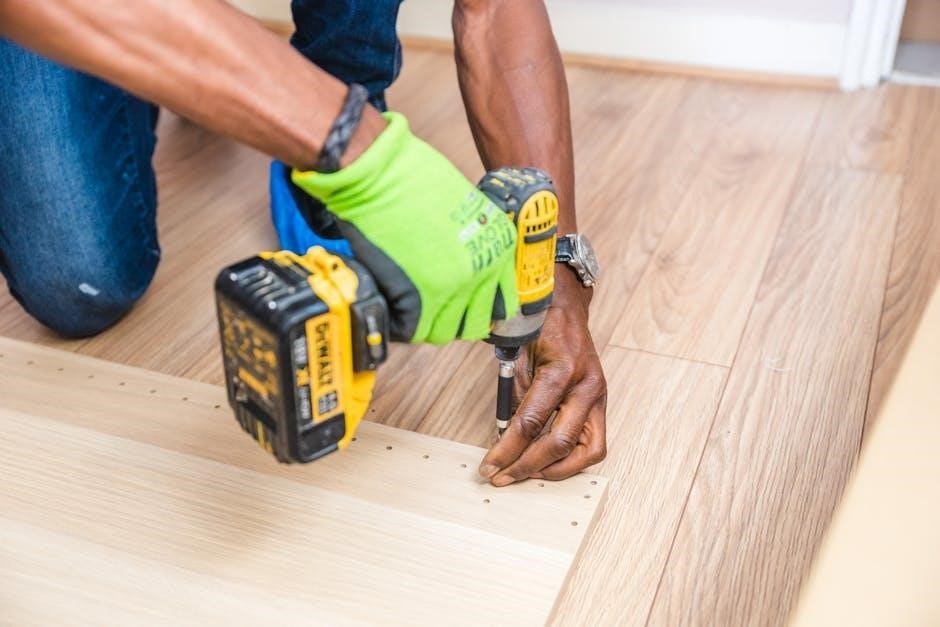
System Compatibility and Requirements
The Honeywell TH5220D1029 is compatible with gas, oil, electric, and heat pump systems, supporting high-efficiency furnaces and two-wire setups for versatile HVAC configurations․
2․1 Compatible Heating and Cooling Systems
The Honeywell TH5220D1029 is compatible with a wide range of heating and cooling systems, including gas, oil, and electric heating, as well as air conditioning․ It also supports heat pump systems, high-efficiency furnaces, and two-wire heat-only configurations․ This versatility ensures it can integrate seamlessly with various HVAC setups, providing precise temperature control and reliable performance․ The thermostat is designed to work with both conventional and heat pump systems, offering flexibility for different home environments․ Its compatibility extends to auxiliary heat systems, making it suitable for climates requiring additional heating support․
2․2 System Types Supported
The Honeywell TH5220D1029 supports various system types, including gas, oil, and electric heating systems, as well as air conditioning․ It is also compatible with heat pumps, high-efficiency furnaces, and steam or gravity heating systems․ Additionally, the thermostat works with heat-only two-wire systems and three-wire zone valves․ This broad compatibility ensures it can be installed in diverse heating and cooling environments, providing reliable performance across different configurations․ Its adaptability makes it suitable for both conventional and advanced HVAC setups, offering consistent temperature control and energy efficiency․

Pre-Installation Checklist
Ensure package contents are complete, necessary tools are available, and safety precautions are followed before starting the installation of the Honeywell TH5220D1029 thermostat․
3․1 Package Contents
Your Honeywell TH5220D1029 package should include the following items: the FocusPRO TH5220D digital thermostat, a wallplate, wall anchors, mounting screws, and AA alkaline batteries․ Ensure all components are present before proceeding with installation to avoid delays․ Additionally, verify that the operating manual is included for reference during the setup process․ Having all parts readily available will ensure a smooth and efficient installation experience․
3․2 Tools and Supplies Needed
To install the Honeywell TH5220D1029 thermostat, you will need a few essential tools and supplies․ Start with a drill and appropriate drill bits for creating holes in the wall․ Mounting screws and wall anchors are typically provided in the package․ Additionally, you may need a screwdriver for securing the wallplate and thermostat․ For wiring, include a wire stripper and a voltage tester to ensure safety․ A ladder or step stool may also be necessary for reaching the installation area․ Finally, ensure you have the AA alkaline batteries included in the package․ Having all these tools ready will streamline the installation process․
3․3 Safety Precautions
Before starting the installation, ensure the power to your HVAC system is turned off at the circuit breaker or fuse box to avoid electrical shock․ Always follow proper safety practices when handling electrical wiring․ Wear protective gloves and eyewear if necessary․ Avoid touching live wires or terminals, as this can cause injury or damage․ Keep the thermostat and wiring away from flammable materials․ Do not overload circuits, and ensure all connections are secure․ If you are unsure about any step, consult a licensed electrician; Properly dispose of any packaging materials to prevent accidents․ Follow all local electrical codes and manufacturer guidelines for a safe installation․

Wallplate Installation
Separate the wallplate from the thermostat by pulling from the top․ Mount the wallplate using provided screws and anchors․ Remove the battery holder for easier installation․
4․1 Separating the Wallplate from the Thermostat
To separate the wallplate from the thermostat, gently pull the wallplate away from the device․ Ensure the battery holder is removed to simplify the process․ This step allows easier mounting of the wallplate on the wall․ CAUTION: Risk of electrical shock or damage․ Handle with care․ Drill 3/16-inch holes for drywall or 7/32-inch holes for plaster․ Mount the wallplate securely using the provided screws and anchors․ Proper separation ensures a clean installation and avoids potential issues with wiring or thermostat functionality․ Follow these steps carefully to ensure a safe and effective setup․
4․2 Mounting the Wallplate
Mount the wallplate on a flat surface, typically 5 feet above the floor․ Use a level to ensure it’s straight․ For drywall, drill 3/16-inch holes; for plaster, use 7/32-inch holes․ Insert wall anchors to secure the screws․ Tighten them firmly without overtightening to avoid damage․ Keep wires organized in the shaded area on the wallplate to prevent pinching․ Once mounted, attach the thermostat to the wallplate, ensuring it clicks into place․ Test the system to confirm proper function․ Ensure power is off during installation to avoid electrical hazards․ Proper mounting is crucial for accurate temperature readings and safe operation․
4․3 Removing the Battery Holder
Before mounting the wallplate, remove the battery holder to access the wiring terminals․ Pull the holder straight out from the back of the thermostat․ This prevents damage to the unit during installation․ Ensure power to the HVAC system is turned off at the circuit breaker․ Handle the battery holder carefully to avoid bending or breaking the wires․ Once removed, set it aside safely․ This step is crucial for proper wiring and prevents electrical hazards․ The battery holder will be reinstalled later with the batteries to provide power to the thermostat․ Ensure no wires are pinched or damaged during this process․
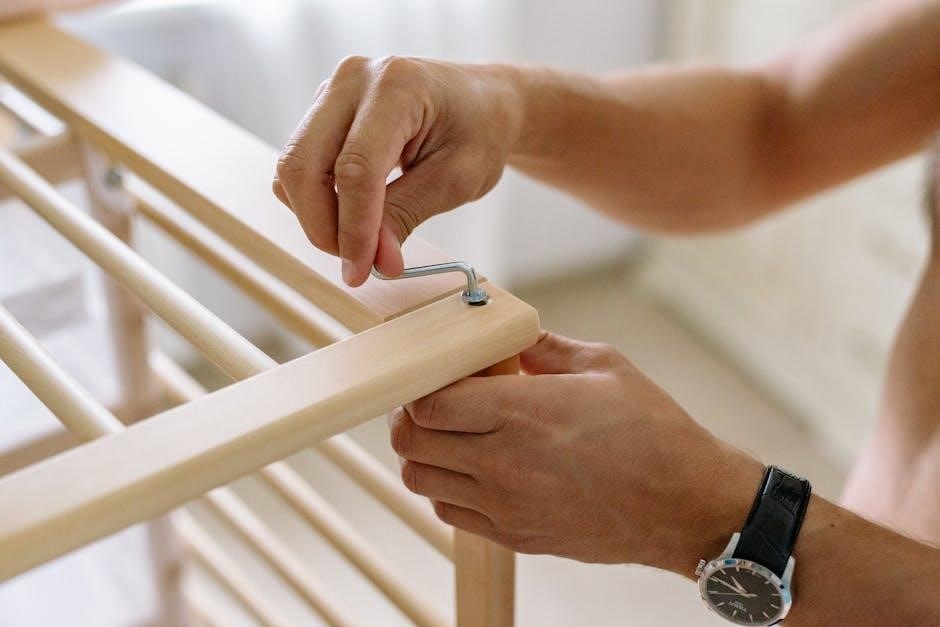
Wiring Instructions
Follow the wiring diagrams for conventional or heat pump systems․ Connect wires to the appropriate terminals, ensuring compatibility with your HVAC system type․ Turn off power before wiring․
5․1 Terminal Designations
The Honeywell TH5220D1029 thermostat uses standard terminal designations to connect with HVAC systems․ The terminals include:
- R: 24V AC power from the transformer․
- W: Heating stage (auxiliary heat for heat pumps)․
- Y: Cooling stage (compressor and condenser fan)․
- G: Fan operation (circulates air)․
- C: Common terminal (required for proper operation)․
- O/B: Reversing valve for heat pumps․
Ensure all wires are securely connected to the correct terminals to match your system type․ Always turn off power before wiring to avoid electrical hazards․
5․2 Wiring Diagrams for Conventional Systems
For conventional HVAC systems, the Honeywell TH5220D1029 thermostat connects to standard wiring configurations․ The R terminal links to the 24V AC power source, while W and Y connect to heating and cooling stages, respectively․ The G terminal controls the fan, and C provides the common connection․ Ensure all wires match the system type (e․g․, gas, oil, or electric heating) and verify proper polarity․ Refer to the wiring diagram in the manual for precise connections, and always turn off power before wiring to avoid electrical hazards․ Correct wiring ensures reliable operation and prevents system malfunctions․
5․3 Wiring Diagrams for Heat Pump Systems
For heat pump systems, the Honeywell TH5220D1029 thermostat requires specific wiring to control both heating and cooling modes․ Connect the R terminal to the 24V AC power source and the W terminal to the heat pump’s heating stage․ The Y terminal connects to the cooling stage, while the O/B terminal links to the reversing valve to switch between heating and cooling․ The G terminal controls the fan, and the C terminal provides the common connection․ Ensure proper wiring to avoid system malfunctions․ Refer to the diagram in the manual for precise connections, especially for two-stage heat pumps, and always disconnect power before wiring․ Correct setup ensures efficient heat pump operation․ Use the factory-installed jumper only for dual-transformer systems and remove it if not required․
5․4 Power Options and Mounting
The Honeywell TH5220D1029 thermostat offers flexible power options, including AA alkaline batteries for backup or primary power and optional 24V AC wiring․ For mounting, attach the wallplate to a flat surface using provided screws and wall anchors․ Ensure the thermostat is installed at eye level, approximately 5 feet above the floor, in an area with consistent temperature․ Avoid mounting near direct sunlight, drafts, or extreme temperatures․ Use the shaded wiring area for neat connections; If using AC power, connect the C terminal․ Always turn off power before wiring to prevent electrical hazards․ Secure the thermostat to the wallplate firmly after wiring is complete․
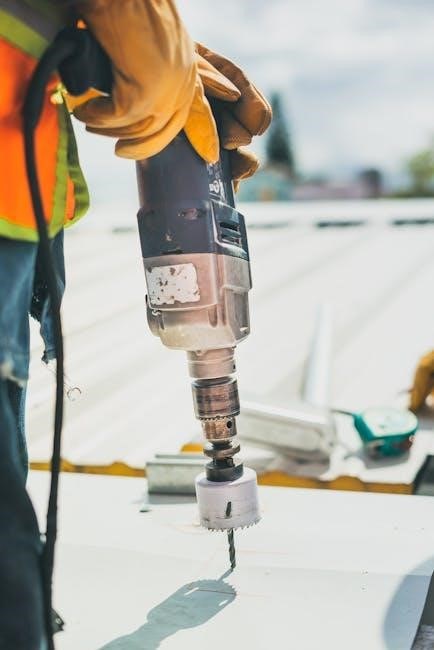
Installer Setup and Configuration
Access installer settings by pressing and holding the s and FAN buttons until the display changes․ Configure system type, auxiliary heat, and function settings using s or t buttons․ Press DONE to save and exit․
6․1 Accessing Installer Settings
To access installer settings on the Honeywell TH5220D1029, press and hold the s and FAN buttons simultaneously until the display changes․ This activates the installer menu․ Use the s or t buttons to navigate through the settings and adjust them as needed․ Press NEXT to move to the next function or DONE to save changes and exit the menu․ This step ensures proper configuration of the thermostat to match the installed HVAC system, allowing for customized functionality and optimal performance․ Always refer to the manual for specific setting details and factory defaults․ Proper setup is crucial for system compatibility and efficiency․
6․2 System Type Configuration
The Honeywell TH5220D1029 allows configuration of the system type to match the installed HVAC equipment․ Using the installer settings, select the appropriate system type, such as gas, oil, electric, or heat pump․ Ensure the configuration aligns with the specific heating and cooling setup in the home․ For heat pumps, configure auxiliary heat settings to optimize performance․ Use the s or t buttons to adjust these settings․ Proper system type configuration ensures compatibility and correct operation of the thermostat with the installed equipment, preventing malfunctions and ensuring energy efficiency․ Refer to the manual for detailed system type options and configuration steps․
6․3 Auxiliary Heat Control Settings
The Honeywell TH5220D1029 allows configuring auxiliary heat control to optimize performance in systems with heat pumps․ In the installer settings, Function 26 enables selecting between Comfort and Economy modes․ Comfort prioritizes warmth, activating auxiliary heat when the heat pump struggles to maintain the set temperature․ Economy minimizes auxiliary heat use, focusing on energy savings․ Adjust these settings based on your system’s requirements․ Proper configuration ensures efficient operation and prevents unnecessary energy consumption․ Use the s or t buttons to navigate and adjust these settings in the installer menu for optimal performance․
6․4 Function Settings and Options
The Honeywell TH5220D1029 offers customizable function settings to tailor the thermostat’s operation to your system․ Access these settings by pressing and holding the s and FAN buttons until the display changes․ Use the s or t buttons to cycle through options․ Key settings include system type, temperature differential, and auxiliary heat activation․ Function 1 configures the system type, ensuring compatibility with your HVAC setup․ Additional options allow adjusting cycle rates and enabling advanced features․ Properly configuring these settings ensures efficient and reliable performance․ Always save changes by pressing DONE to maintain your preferences and optimize system operation․
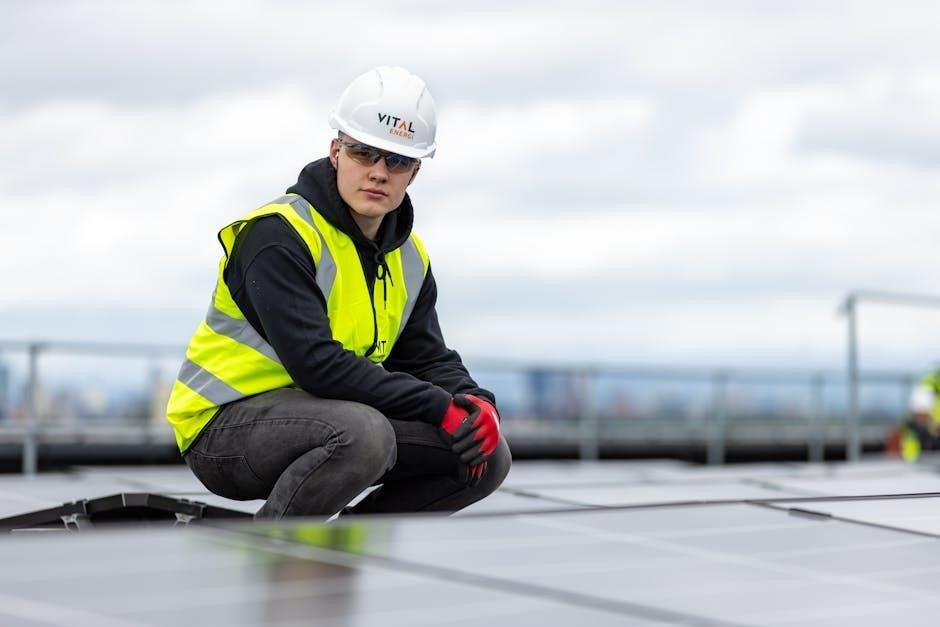
System Testing
After installation, test the entire system to ensure proper operation․ Check thermostat responses, heating, and cooling activation․ Verify all connections and settings for correct functionality․ Refer to the manual for detailed testing procedures to confirm everything works seamlessly․
7․1 Testing the Heating System
To ensure proper heating system operation, set the thermostat to a higher temperature than the current room temperature․ Verify that the heating system activates and runs smoothly․ Check for proper ignition, airflow, and temperature increase․ Monitor the thermostat display to confirm the system is responding correctly․ Listen for unusual noises or malfunctions․ If issues arise, refer to the troubleshooting section․ After testing, adjust settings as needed to ensure optimal performance and energy efficiency․ Proper testing confirms the system is functioning as intended and ready for daily use․
7․2 Testing the Cooling System
To test the cooling system, lower the thermostat temperature below the current room temperature․ Ensure the system activates and cools properly․ Check for cool airflow from vents and monitor the thermostat display for confirmation․ Listen for unusual noises․ If issues arise, refer to troubleshooting․ Adjust settings for optimal performance․ Proper testing ensures the cooling system operates effectively and efficiently, maintaining desired temperatures without energy waste․
7․3 Verifying Auxiliary Heat Operation
To verify auxiliary heat operation, set the thermostat to a lower temperature and ensure it activates the auxiliary heat source․ Check the display for confirmation and listen for system operation․ If the auxiliary heat does not engage, review wiring connections and installer settings, particularly Function 26 (Auxiliary Heat Control)․ Ensure the system is configured correctly for your specific setup․ proper operation ensures reliable heating during extreme conditions․ Always refer to the manual for detailed configuration options and troubleshooting steps if issues arise․
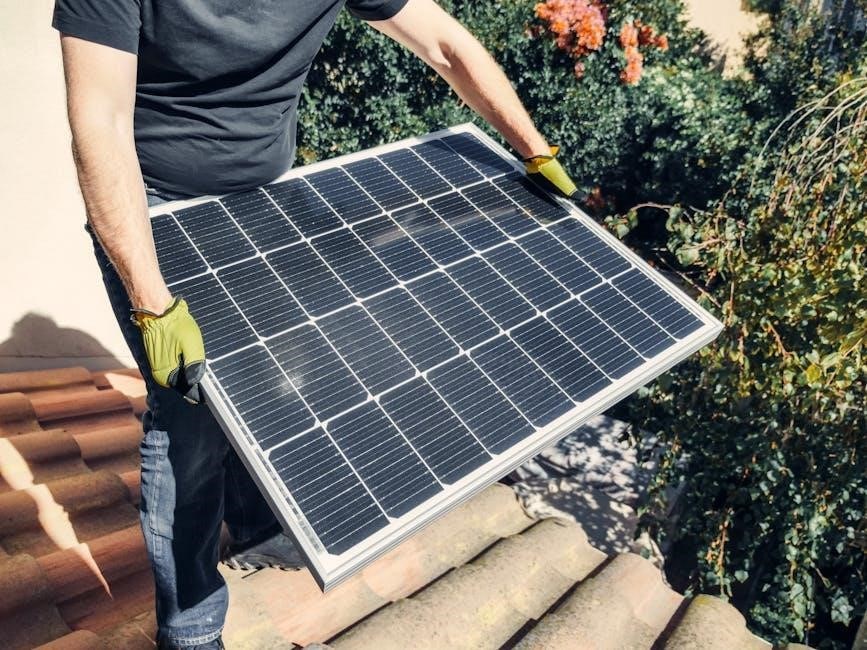
Troubleshooting Common Issues
Identify and resolve issues like incorrect wiring, misconfigured settings, or installation errors․ Check connections, verify system type configurations, and ensure proper auxiliary heat settings for optimal performance․
8․1 Common Installation Mistakes
One of the most frequent errors during installation is incorrect wiring connections, leading to system malfunctions․ Ensure terminals are matched correctly as per the wiring diagram․ Neglecting to remove the factory-installed jumper in single-transformer systems can cause operational issues․ Additionally, improper mounting of the wallplate or failure to level it may result in inaccurate temperature readings․ Always verify that the thermostat is installed at the recommended height of 5 feet above the floor to ensure accurate sensing․ Properly separating the wallplate from the thermostat before mounting is also crucial to avoid damage․ Lastly, forgetting to insert batteries or connect the C terminal for primary power can prevent the thermostat from functioning correctly․ Addressing these common mistakes ensures a smooth and reliable operation of the Honeywell TH5220D1029 thermostat․
8․2 System Malfunction and Error Codes
The Honeywell TH5220D1029 may display error codes to indicate system malfunctions․ Common issues include faulty temperature sensing, wiring problems, or power supply discrepancies․ Error codes like “E1” or “E2” often relate to sensor malfunctions or communication failures between components․ If the display shows “LO” or “HIGH,” it may indicate improper system setup or extreme temperature deviations․ In such cases, verify wiring connections and ensure proper power supply․ If issues persist, consult the installation manual or contact Honeywell customer support for assistance․ Addressing these codes promptly ensures optimal system performance and avoids further complications․
8․3 Wiring and Connection Problems
Wiring issues are common during installation and can prevent proper system operation․ Ensure all terminals are correctly connected, as incorrect wiring can cause malfunctions or safety hazards․ Loose connections or reversed wires may result in the thermostat failing to control heating or cooling systems․ Verify that the wires match the terminal designations in the manual․ If wires are damaged or corroded, replace them immediately․ Use needle-nose pliers for secure connections․ If problems persist, consult the wiring diagrams or contact Honeywell customer support for guidance․ Proper wiring is essential for safe and efficient thermostat performance․
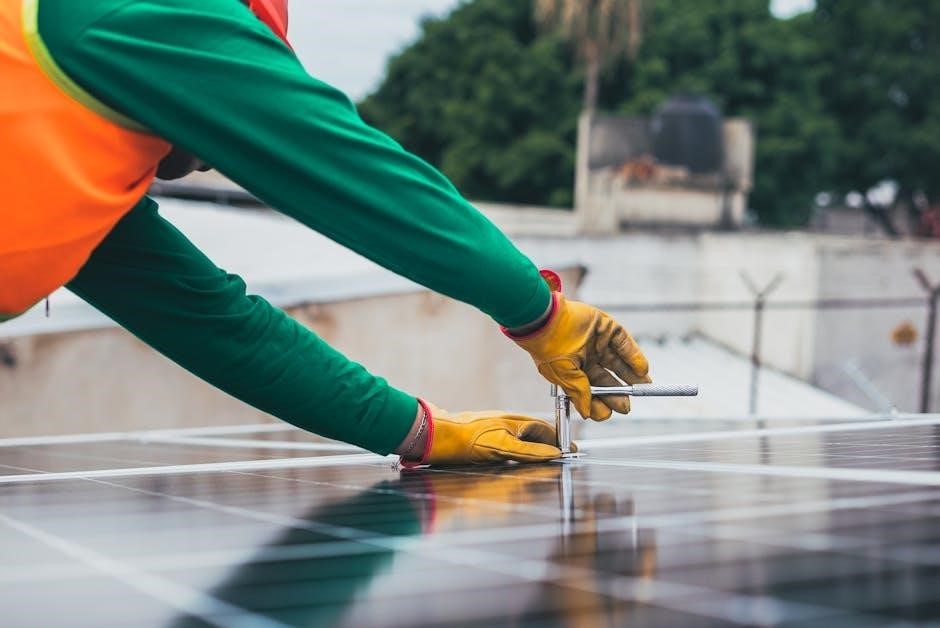
Maintenance and Upkeep
Regularly clean the thermostat and replace AA alkaline batteries annually․ Check wiring connections for tightness and inspect for damage or corrosion to ensure reliable operation․
9․1 Cleaning the Thermostat
Regularly clean the Honeywell TH5220D1029 thermostat to ensure optimal performance․ Use a soft, dry cloth to wipe the display and exterior surfaces․ Avoid harsh chemicals or abrasive materials, as they may damage the screen or housing․ For stubborn stains, lightly dampen the cloth with water, but ensure no moisture enters the unit․ Turn off power to the system before cleaning to prevent electrical issues․ Cleaning every few months helps maintain accuracy and extends the product’s lifespan․ This simple maintenance step ensures reliable temperature control and clear display visibility․
9․2 Replacing Batteries
To replace the batteries in your Honeywell TH5220D1029 thermostat, first ensure the system is powered off․ Remove the battery holder by gently pulling it from the back of the thermostat․ Take out the old AA alkaline batteries and discard them properly․ Insert two new AA alkaline batteries, ensuring the + and ౼ terminals align correctly․ Reattach the battery holder securely to the thermostat․ This process ensures continuous operation, especially during power outages․ Replace batteries when the display indicates low power to maintain functionality and system reliability․ Always use high-quality alkaline batteries for optimal performance․
9․3 Updating Settings for Optimal Performance
To ensure optimal performance, periodically review and update your Honeywell TH5220D1029 thermostat settings․ Access the installer settings by pressing and holding the ‘s’ and ‘FAN’ buttons until the display changes․ Navigate through the menu using ‘s’ or ‘t’ to adjust settings like system type, auxiliary heat control, and function options․ Choose between comfort or economy settings for auxiliary heat activation․ Verify that the system type matches your installed HVAC equipment․ After making changes, press ‘DONE’ to save and exit․ Regular updates ensure the thermostat operates efficiently, providing consistent comfort and energy savings․ Refer to the online manual for detailed guidance․
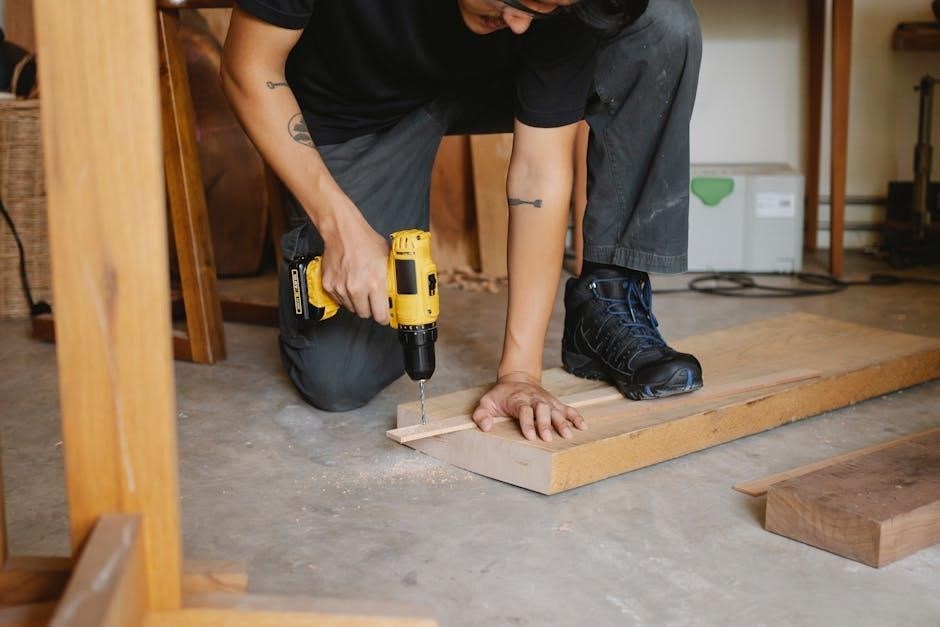
Additional Resources
For further assistance, visit Honeywell’s official website for detailed manuals, contact customer support at 1-800-468-1502, or explore the Frequently Asked Questions section for troubleshooting and tips․
10․1 Online Manuals and Guides
The Honeywell TH5220D1029 installation manual is available for free download in PDF format from Honeywell’s official website․ It provides comprehensive guides in English, French, and Spanish, covering installation, operation, and troubleshooting․ The manual includes detailed diagrams, wiring instructions, and step-by-step configurations for various HVAC systems․ Additionally, online resources offer FAQs and video tutorials to assist with setup and maintenance․ For further support, Honeywell’s customer service can be reached at 1-800-468-1502․ Always refer to the official manual to ensure proper installation and system compatibility, and to avoid potential safety hazards or equipment damage․
10․2 Honeywell Customer Support
Honeywell offers comprehensive customer support for the TH5220D1029 thermostat, ensuring seamless installation and operation․ Visit customer․honeywell․com for online resources, including FAQs, troubleshooting guides, and downloadable manuals․ For immediate assistance, contact Honeywell’s toll-free customer care at 1-800-468-1502․ Their dedicated team provides expert guidance on installation, system configuration, and resolving common issues․ Additionally, regional support options are available, ensuring help is accessible in multiple languages, including English, French, and Spanish, to cater to diverse user needs and enhance the overall ownership experience with Honeywell products․
10․3 Frequently Asked Questions
The Honeywell TH5220D1029 installation manual addresses common questions to ensure smooth installation and operation․ FAQs include compatibility with various HVAC systems, wiring guidelines, and troubleshooting tips for issues like display malfunctions or temperature inaccuracies․ Users often inquire about battery replacement, auxiliary heat settings, and system type configuration․ The manual also provides guidance on resolving error codes and optimizing thermostat performance․ For additional help, refer to the online resources or contact Honeywell’s customer support․ These FAQs are designed to empower users with quick solutions for seamless functionality․
The Honeywell TH5220D1029 installation manual provides a comprehensive guide for installing, configuring, and troubleshooting this non-programmable digital thermostat․ By following the outlined steps and tips, users can ensure optimal performance and energy efficiency․ The thermostat’s compatibility with various HVAC systems makes it a versatile solution for different home setups․ For any unresolved issues, referring to the additional resources or contacting Honeywell’s customer support is recommended․ This manual serves as a complete resource to help users maximize their thermostat’s functionality and enjoy consistent comfort in their homes․
